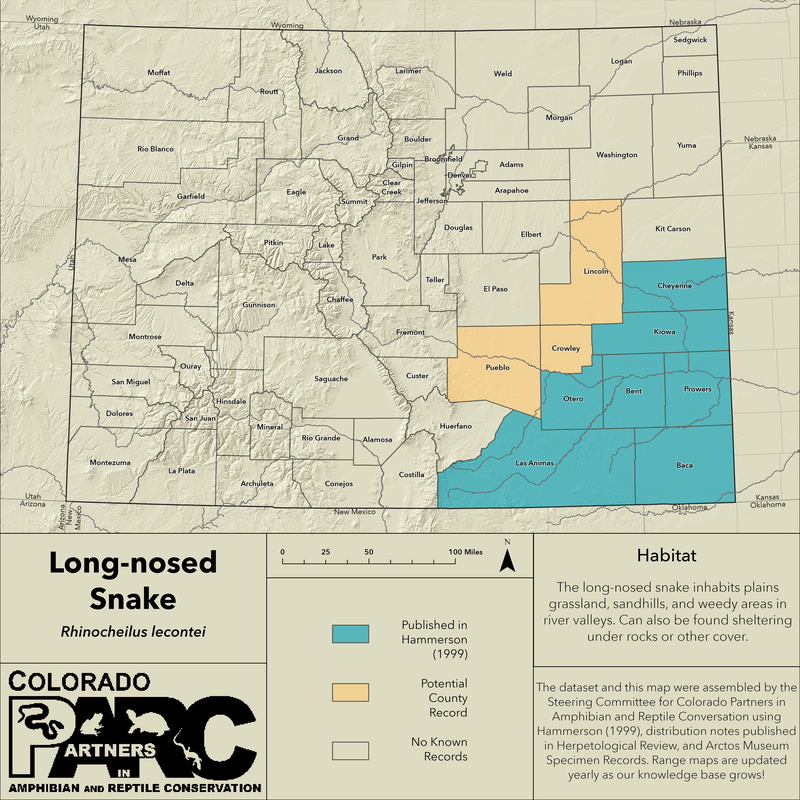|
Identification:
Distribution: This snake occurs in southeastern Colorado at elevations below 5,00 feet (1,525 m).
(Hammerson 1999) Activity: Activity occurs from mid-May through early-September, although weather conditions may allow for a longer season. Long-nosed snakes are primarily nocturnal, though in a few instances they have been found during the day. This snake can be found active at temperatures as low as 59°F (15°C) and at high winds. (Hammerson 1999)
Conservation Status: Designated as a non-game species in Colorado. Although records of long-nosed snakes are not common, this snake is likely more widespread than it would appear. In Colorado, the population is considered to be small, but secure (Hammerson, 1999).
NatureServe rank: G5 (Globally Secure), S1 (State Critically Imperiled). |
Habitat: The long-nosed snake inhabits plains grassland, sandhills, and weedy areas in river valleys. Can also be found sheltering under rocks or other cover. (Hammerson 1999)
Diet: The long-nosed snake tends to eat lizards and their eggs, rodents, small snakes, and occasionally insects. This snake kills its large prey items by constriction before consuming them. (Hammerson 1999)
Defense: When alarmed, this snake may vibrate its tail in defense. Like other snakes, the long-nosed snake is known to hide its head, spray cloacal sac secretions, and writhe about. It has been observed that juveniles tend to exhibit more defensive behavior than the generally passive adults. (Hammerson 1999)
Natural Predators: Coming Soon!
|
Cited & Additional Resources
Hammerson G. A. 1999. Amphibians and Reptiles in Colorado. University Press Colorado, Boulder.
Hammerson G. A. 1999. Amphibians and Reptiles in Colorado. University Press Colorado, Boulder.
Account compiled by: Hayden Lewis
Reviewed by:
Last Updated: 1/24/2023 by Anthony Berardi
Reviewed by:
Last Updated: 1/24/2023 by Anthony Berardi


